Part 1 of 2
A friend asked that this article be posted on the website. I hereby honor his request. —H.B.
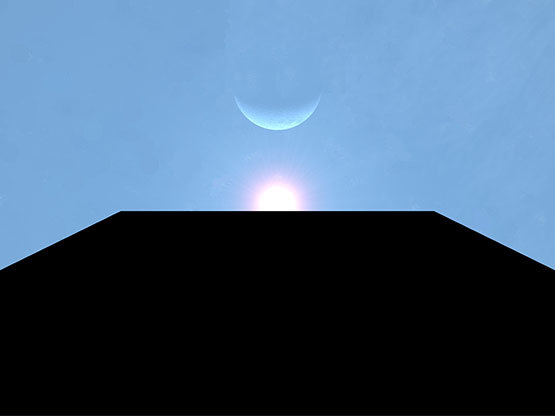

Sun rises over monolith in Stanley Kubrick's 2001 (1968).
Two men looked out through prison bars
One saw mud—the other, stars.
One saw mud—the other, stars.
— Frederick Langbridge
In the beginning was the Monolith.
There it stood, at the dawn of mankind, entrancing Moon-Watcher and his fellow apemen, doing strange things to them, preparing them for intelligence and civilization. There it (or rather, its counterpart) stood again, eons later, as Heywood Floyd beheld it, this time on the moon, under the name of Tycho Magnetic Anomaly-1. It was a vertical slab of jet-black material, about ten feet high and five feet wide: a perfect, symmetrical rectangular block, reflecting almost no light at all. And it stood yet again on the surface of Japetus, a moon of Saturn (the movie version has it floating in space near Jupiter), this time as the mile-high big brother of TMA-1: TMA-2, beheld by astronaut David Bowman.
“Call it the Star Gate,” says Arthur C. Clarke in his novel, 2001: A Space Odyssey (1968), so brilliantly depicted by Stanley Kubrick in the movie of the same name. Clarke also calls it “the Sentinel,” after his 1948 short story on which the novel was based. As astronaut Bowman watched, the thing inverted, turned itself inside out; it was no longer a rectangular block but a hollow shaft, and Bowman had time for just a single broken remark: “The thing’s hollow—it goes on forever—and—oh my God—it’s full of stars!”
“The Star Gate opened,” writes Clarke. “The Star Gate closed.” And that was the last Mission Control back on earth ever heard of Bowman.
What follows in the movie is the most dazzling sequence of images that depict a transfinite celestial journey, unsurpassed even after all these years of development in cinematographic technology and computer graphics. What Kubrick shows us on the screen is nothing less than a view of a spiritual Ascension, even if still only a pale copy of the latter.
Beyond time and space, Bowman is transported to a location where he ages prematurely—old age is perennially understood to be a sign of wisdom—and, on his deathbed (“Die before you die”—Mohammed), comes face to face for the last time with the black Monolith, which acts as midwife in his rebirth as the “Star-Child” in the vicinity of the earth.
As Master Ahmet Kayhan explained: "I experienced Observation of the Compassionate. Thank God. I became real with the Real, thank God. I became one day old. I knew and saw my Lord. The universe ceased to exist, it became ashes, it burned up, only God remained. The name ‘Ahmet’ remained, he himself ceased to exist. Only God was left. The universe was filled with joy.” (Bayman, The Teachings of a Perfect Master (2012), p. 453. Emphasis added.)
What is it in 2001 that held generations of movie-goers spellbound? What was the reason for its astounding success?
A symbol, according to psychologist Carl G. Jung, is something that is never directly comprehensible at first glance. It excites the psyche of man in a way that does not readily lend itself to logical analysis. And Kubrick was careful to film the movie so that many of the clues in the novel were left out, as primarily a visual experience which let watchers view it without tying it down finally to anything definite—which is what made 2001 a great work of art. But this brings up the further question of the role in modern society of the science fiction genre as a whole.
Most science fiction, of course, projects the present into the future tense. It rephrases contemporary issues of society and technology in a future setting. But science fiction at its most profound—like all great works of art and literature—speaks to the mythic dimension in man. With all due respect to Freud and his achievements, rockets and aliens address depths of the psyche unplumbed by Freudian symbolism. Why does sci-fi enthrall many of us to such a degree? Because at its best,science fiction is,whether we realize it or not, the mythology of our time. In ages past, myths and fairy tales referred back to a previous time or beginning. In keeping with our contemporary progressive world view, science fiction is forward-looking, but this really does not make much of a difference, for what is in our past is in our future as well: as the Koran puts it, “You have come from God, and you shall return to Him.” Perhaps, in situating major themes in the future instead of the past, it is even more apt; for what is past is past, and for us the really significant things still remain in the future.
Science Fiction as Future-Oriented Myth
To the perceptive eye, great science fiction betrays mythological sources from the very first step. Mary Shelley’s Frankenstein (1818), the first work of fiction to bear all the characteristics of the genre, is a retelling, in physical terms, of the Cabalistic legend of the Golem. In Robert Heinlein’s Stranger in a Strange Land, Mike’s return recalls the Second Coming of Christ; in Walter Miller’s Canticle for Leibowitz, Rachel’s primal innocence recalls the Creation story. InChildhood’s End, another Clarke novel, Karellen the alien, with his “sheer size” and “voice like an organ” upon whom “no man may look and live” (Exodus 33:19), plays God to Stromgren’s Moses. The Overlords, to whose race Karellen belongs, are like angels in that unlike man, they cannot attain immortality but can only act—in a similar way to 2001—as midwives in his rebirth, and hence are finally inferior to him. The “Total Breakthrough” which spreads through mankind like an epidemic at the end of the book recalls apokatastasis (the restoration of all souls to a state of blessedness) and the Descent of Grace: “In a real sense, those no-longer-humans floating off into space are entering a heaven.” [1] In George Lucas’ Star Wars movie series, Luke Skywalker plays the archetypal role of the hero; it comes as no surprise that director George Lucas was studying the works of mythologist Joseph Campbell at the time. And “the Force,” according to Lucas, is “a distillation of a lot of mythological religious teachings.” [2]
As a further example, just consider H. G. Wells’ The Time Machine. The Time Traveller goes hundreds of thousands of years into the future, there to find the earth transformed into a Garden of Delights and inhabited by the peaceable Eloi, while beneath the earth, in infernal regions, dwell the repulsive and brutal Morlocks. What are the Eloi but angels in Heaven, and the Morlocks demons in Hell?
Naturally, all these authors tap rich sources of the Western cultural heritage, although when it comes to myth, we find that similar themes are sounded in all the mythologies of the world. But something is going on here that lies deeper than the inheritance or imagination of any science-fiction writer. Mankind has always had stories of other worlds and other beings. But whereas these worlds and beings were originally located in the spiritual realm, they are now transposed, due to modern man’s alienation from his spiritual wellsprings, into the physical universe. The “higher worlds” have now become planets circling stars in other galaxies, and there are two types of aliens: angelic (such as Spielberg’s E.T.) and demonic (the whole class of bug-eyed monsters). Is it a coincidence that, just when we erased the spiritual world from our minds, we began to think about extraterrestrial life in three-dimensional space? Is it a coincidence that, just when we decided to dismiss fairies, elves, demons and the djinn, people began reporting UFOs and alien abductions? (The two form an almost unbroken temporal continuity.) Having renounced another, invisible, parallel world accessible to his consciousness, modern man now projects such things into the physical world. This may not only be erroneous, in the sense that we have misplaced these objects of our attention—extraterrestrial physical life may not actually exist and thus continue to remain unproved. It may also be dangerous, in the sense that forming the wrong conception about a phenomenon prevents the possibility of coping with it effectively.
The Symbolism of the Monolith
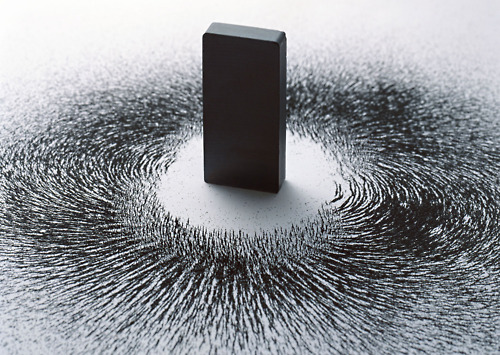 So let us return to 2001. In this novel, Clarke has made use of four major mythical/spiritual themes. The first is the death-rebirth experience of the soul, common to all the major traditions of humanity. The second is the Star-Child—the Child of the Heart (walad al-qalb) of Islamic Sufism, the Golden Child (hiranyagarbha) of Hinduism, etc., which is the outcome of the rebirth. The third is the Ascension that one experiences as the result of this spiritual rebirth. These all indicate that Clarke is tapping the deepest levels of the human psyche. There remains only one theme to discuss: the Monolith. Inscrutable, enigmatic, it baffles any immediate attempt to unwrap its mystery. What can it symbolize?
So let us return to 2001. In this novel, Clarke has made use of four major mythical/spiritual themes. The first is the death-rebirth experience of the soul, common to all the major traditions of humanity. The second is the Star-Child—the Child of the Heart (walad al-qalb) of Islamic Sufism, the Golden Child (hiranyagarbha) of Hinduism, etc., which is the outcome of the rebirth. The third is the Ascension that one experiences as the result of this spiritual rebirth. These all indicate that Clarke is tapping the deepest levels of the human psyche. There remains only one theme to discuss: the Monolith. Inscrutable, enigmatic, it baffles any immediate attempt to unwrap its mystery. What can it symbolize? We obtain a clue when we realize that Clarke has endowed this black stone, resembling nothing so much as a flattened and elongated United Nations building, with the proportions of 1-4-9, or 12-22-32. Thus it stands, Clarke tells us, for the squares of the first dimension (width), the second dimension (length), and third dimension (height), respectively, and he goes on to imply that the sequence is continued beyond three dimensions. Hence, we discover that the Monolith has to do with dimensionality, and if we do not square them, we have the sequence 1-2-3. Note that the notion of “squaredness” is implicit in Clarke’s numbers: we have a square in length, a square in width, and a square in height. Now these squares naturally lead one to think of an object whose faces are composed of squares, which is a cube. Moreover, in three dimensions the simplest regular geometrical solid resembling the Monolith is a cube, and in two dimensions the simplest corresponding figure is a square, both of which are mathematically simpler and aesthetically more appealing than the slab. Our problem is thus reduced to a treatment of the square/cube, and its blackness. Let us tackle the square first.
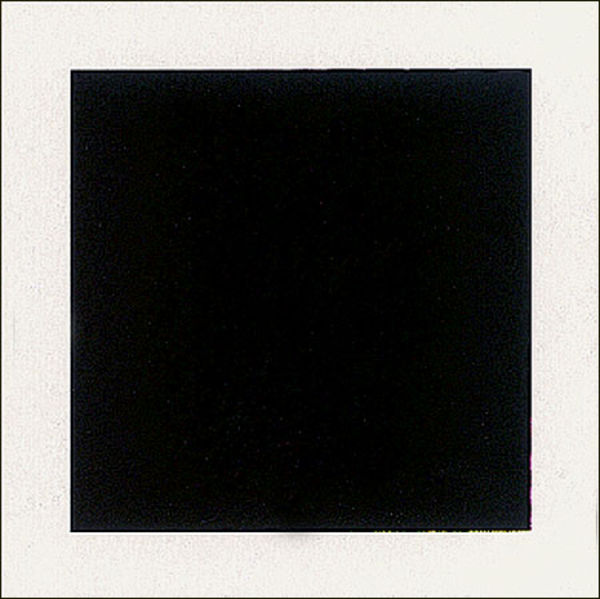
Kazimir Malevich: Black Square, 1915. Malevich declared it to be
the “zero of form,” and claimed that it eclipsed all previous art.
the “zero of form,” and claimed that it eclipsed all previous art.
Square, Circle, Cube, Sphere
As soon as we “renormalize” Clarke’s rectangular prism to the square/cube, we find ourselves on familiar ground. For in addition to its geometrical import, it has frequently been used as a symbol of the psyche in many cultures and traditions. Closely related to the square is the circle in two dimensions and to the cube, the sphere in three dimensions, which are perhaps of even greater symbolic significance.
In what follows we shall make use of—but not confine ourselves to—the findings of Jungian analysis. [3] To begin with, the square (and often the rectangle, like Clarke’s “panel”) represents the four classical elements (Air, Water, Earth, Fire) and is thus a symbol of earthbound matter, of the body and physical reality. Its four corners suggest differentiation, and thus the created universe. Furthermore, Pythagoras associated the square with the soul; the saying that the soul is a square and that four is the number of all living things was attributed to him by his pupils. The quadrangle also stands for the realization of wholeness in consciousness.
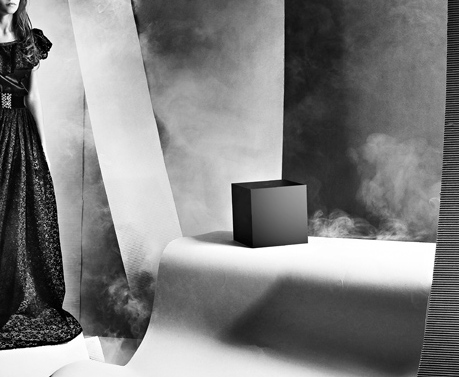
The Black Cube, first exhibited in 2010. Its website states: "It is black – deep and mysterious. It is cubic – shiny on every side with sharp edges, it has the most rational and most perfect shape. It is nicely crafted – high-quality materials, premium finish, beautiful and elegant, pure class. Its versatility is endless... just start dreaming and then turn this thing into whatever you might desire it to be. It is what we all have secretly been waiting for, for such a long time – an overdue revelation... [the] conclusion of the process of modernization."
The Black Cube "was created by an anonymous collective of German designers who[se] agenda is to develop radical design solutions for a sustainable future... Stepping into its showroom one could already sense a sublime atmosphere. Sacral sounds were filling the air... the cube could be used [as] a fetish object or an altar."
The Black Cube "was created by an anonymous collective of German designers who[se] agenda is to develop radical design solutions for a sustainable future... Stepping into its showroom one could already sense a sublime atmosphere. Sacral sounds were filling the air... the cube could be used [as] a fetish object or an altar."
The cube is the extension of the two-dimensional square into three dimensions. Cartesian in its simplicity, the cube is the basic building block of Euclidian 3-space and architecture. It thus symbolizes matter, and more specifically, solid stone. The cube is also the simplest structure that is architecturally feasible. Now stone, whether precious or otherwise, is a symbol of the Self. According to Mircea Eliade, the stone is an archetypal image expressing absolute reality, [4] out of which relative or conditioned reality is born; for the Chinese Taoists, the entire universe proceeded out of the “uncarved block.” Man is mortal; stone is impervious to the passage of time and hence a symbol of immortality (just remember the pyramids of Egypt). The medieval alchemists, who were psychologists and mystics more than chemists, symbolized their famous “philosopher’s stone” by a cube, because of the perfection of its proportions. The philosopher’s stone is the stone that transmutes other materials into gold when it comes in contact with them, and symbolizes—gold being the most precious metal—the Purified Self of the Master, the Perfect Man or Universal Man of the Sufis or the True Man of the Chinese, who perfects the souls of other human beings when allowed to shine on them. The cube is thus the symbol of completion and perfection.
 The Star of David (also called the Seal of Solomon), the Jewish symbol, is composed of two equilateral triangles inscribed in a hexagon, one standing on its base (symbolizing Fire) and the other on its apex (symbolizing Water). Thus the Star as a whole, like the Chinese Tai-gi-tu, symbolizes the union of opposites. Now the hexagon in which it is inscribed can also be seen as a cube in three dimensions, viewed directly from above one vertex; and the cube itself unfolds to yield
The Star of David (also called the Seal of Solomon), the Jewish symbol, is composed of two equilateral triangles inscribed in a hexagon, one standing on its base (symbolizing Fire) and the other on its apex (symbolizing Water). Thus the Star as a whole, like the Chinese Tai-gi-tu, symbolizes the union of opposites. Now the hexagon in which it is inscribed can also be seen as a cube in three dimensions, viewed directly from above one vertex; and the cube itself unfolds to yield 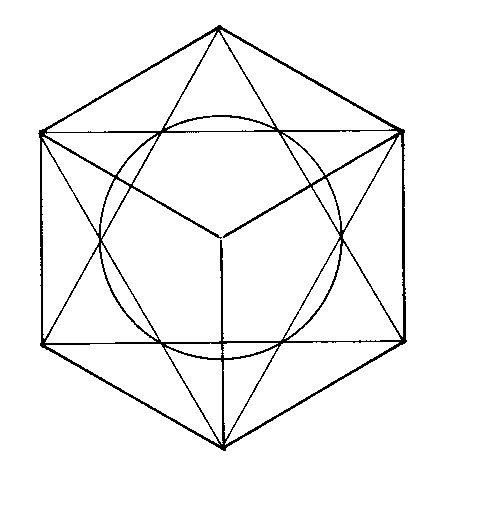 the Latin Cross, composed of six squares in two dimensions. If either the top or the bottom is omitted, the cube unfolds into a Greek Cross with equal branches. Thus, the cube is a synthesis in three dimensions of the two-dimensional symbols of Judaism and Christianity.
the Latin Cross, composed of six squares in two dimensions. If either the top or the bottom is omitted, the cube unfolds into a Greek Cross with equal branches. Thus, the cube is a synthesis in three dimensions of the two-dimensional symbols of Judaism and Christianity. 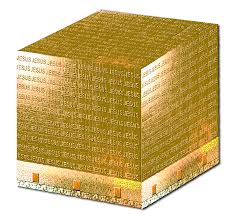
The New Jerusalem or Heavenly Jerusalem (Revelation 21:1-10) is often depicted in the form of a cube, much like the Kaaba. Of course, it is conceived to be much larger, and could cover almost 60 percent of the continental United States. It could be a veiled reference to the original Kaaba in Heaven, the House of Splendor (Bayt al-Mamoor), which God, if He so wished, could expand to any size.
In the Biblical Book of Revelation, the Heavenly Jerusalem has a square ground plan. No temple is at its center, for God’s immediate presence is the center of it. St. John of the Cross describes how, in a vision, he saw the Heavenly City in the form of a perfect cube, equal in length, breadth and height. The “Holy of Holies” (Sanctum Sanctorum), the inmost sanctuary of the Hebrew Temple, was likewise constructed in the form of a perfect cube, symbolizing Heaven and the wholeness of God. It contained the Ark of the Covenant, and was entered only once a year, by the High Priest alone. [5] Since the Temple plans were revealed to David by God (2 Chronicles,28:19), we have to conclude that it, too, was part of God’s Revelation. And Solomon affirms that the altar is “a resemblance of the holy tabernacle which Thou hast prepared from the beginning” (Wisdom of Solomon, 9:8).
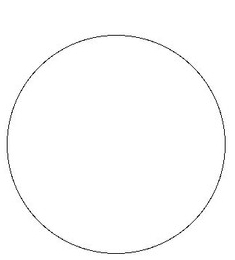
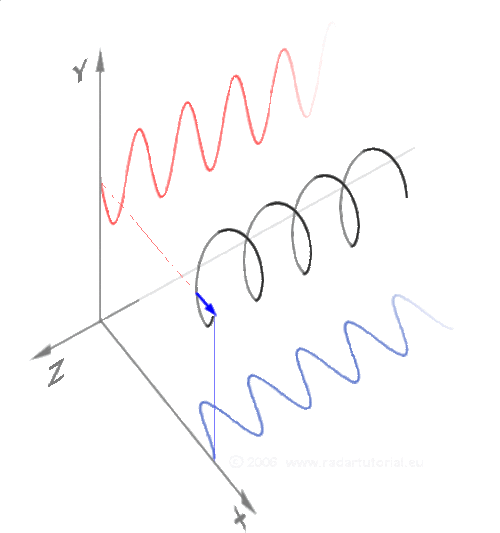
Like the stone cube, the circle, too, is a symbol of the Self. It is a symbol of Unity because, unlike the straight line which has two ends, its ends are united as one. Its roundness stands for wholeness, whether psychic or natural. It expresses the totality of the psyche in all its aspects. In Zen, it stands for enlightenment and human perfection. In contrast to the sharp-cornered square, it suggests nondifferentiation and is thus a symbol of the divine. Because one can go around and around it forever without any interruption, it also stands for infinity and eternity, or eternal return and cyclic time. Further, stretched out into three dimensions, circular motion provides the basis for the spiral, the helix, and the rhythmic oscillation of the sine wave. The ring and the tail-eating serpent ouroboros are “isotopes” of (types of equal value as) the circle. The Chinese tai-gi-tu disk comprises both Yin and Yang, thus representing Totality. In non-Christian cultures, sun-wheels are a frequent occurence, which leads us on to the sun disk, considered to be divine ever since the Egyptians. Gold takes its color from the sun, and thus stands for solidified light. The ancient Indian texts never tire of telling us that “gold is immortality.”
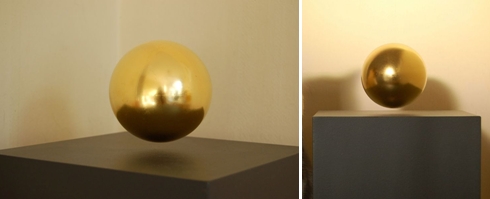
Gold sphere over black cube.
The dazzling globe of the sun provides our entry point for a discussion of the sphere, the three-dimensional counterpart of the circle. (Sipihr in Persian originally meant the hemisphere of the sky.) Like the circle but even more so, it is a symbol of completion and perfection, encountered frequently in nature (such as in planets, stars, and various kinds of fruit). For Plato, the sphere symbolized the psyche. Empedocles thought of God as the sphairos, “a rounded sphere enjoying a circular solitude.” [6] This precedes the remark by such luminaries as St. Bonaventure and Nicholas of Cusa that “God is an intelligible sphere whose center is everywhere and whose circumference is nowhere.” For a long time, the sky was conceived as a hemisphere covering the earth.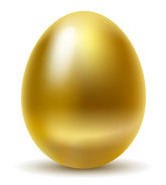 In this connection, the ovoid is also worth mentioning, obtained when the sphere is distorted into an oval shape. This is the “Cosmic Egg” from which the universe was created, according to the conception of many peoples. In modern science, it still commands our attention as the Primordial Fireball or “white hole” that exploded with the Big Bang to produce the physical universe.
In this connection, the ovoid is also worth mentioning, obtained when the sphere is distorted into an oval shape. This is the “Cosmic Egg” from which the universe was created, according to the conception of many peoples. In modern science, it still commands our attention as the Primordial Fireball or “white hole” that exploded with the Big Bang to produce the physical universe. 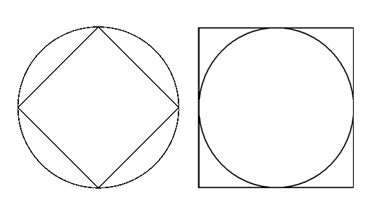 Now it is interesting that human beings have always and everywhere not remained content with only the circle or only the square, but have striven to combine the two. For the Chinese, the symbol of Heaven is a circle, while the symbol of earth is a rectangle. [7] The simplest such combination, appealing in its symmetry, is a square inscribed in a circle or a circle inscribed in a square. This is the basic “mandala” form, evidenced everywhere from the sand paintings of the Amerindians to Hindu and Buddhist India and Tibet, while in the Chinese Secret of the Golden Flower the “golden mandala” is a squared circle. The vision and understanding of the Hermetic philosophers likewise led to the concept of the squared circle, and the alchemists were for a time preoccupied with the mathematically insoluble problem of “squaring the circle.” This may strike us as quaint nowadays, but to them it represented a valid—if unattainable—symbol, and those who knew that it signified the descent of spirit into matter or the divine into the human (and thus psychic completion—what Jung calls “individuation”) never bothered with the geometrical exercise at all—just as they disdained the mundane aspiration to transform physical lead into physical gold. For mundane gold was mere chickenfeed to them, compared to the incomparably nobler and more exalted goal of cultivating the “Star-Child,” the “glorious body” (which recalls the “diamond body” of the Buddha), the True Gold of which the ordinary version was only a simile.
Now it is interesting that human beings have always and everywhere not remained content with only the circle or only the square, but have striven to combine the two. For the Chinese, the symbol of Heaven is a circle, while the symbol of earth is a rectangle. [7] The simplest such combination, appealing in its symmetry, is a square inscribed in a circle or a circle inscribed in a square. This is the basic “mandala” form, evidenced everywhere from the sand paintings of the Amerindians to Hindu and Buddhist India and Tibet, while in the Chinese Secret of the Golden Flower the “golden mandala” is a squared circle. The vision and understanding of the Hermetic philosophers likewise led to the concept of the squared circle, and the alchemists were for a time preoccupied with the mathematically insoluble problem of “squaring the circle.” This may strike us as quaint nowadays, but to them it represented a valid—if unattainable—symbol, and those who knew that it signified the descent of spirit into matter or the divine into the human (and thus psychic completion—what Jung calls “individuation”) never bothered with the geometrical exercise at all—just as they disdained the mundane aspiration to transform physical lead into physical gold. For mundane gold was mere chickenfeed to them, compared to the incomparably nobler and more exalted goal of cultivating the “Star-Child,” the “glorious body” (which recalls the “diamond body” of the Buddha), the True Gold of which the ordinary version was only a simile.  An old alchemical drawing depicts a square nested in a circle, with a small circle at the center, out of which radiate, along the diagonals of the square, four lines dividing the figure into four sections. As Jung has shown, these correspond to the four classical elements, while the disk in the middle is the quintessence, the fifth element. The Chinese accepted gold as this fifth element (their classification contains five elements, not four), and as the alchemists have always cautioned: “Our gold is not ordinary gold.”
An old alchemical drawing depicts a square nested in a circle, with a small circle at the center, out of which radiate, along the diagonals of the square, four lines dividing the figure into four sections. As Jung has shown, these correspond to the four classical elements, while the disk in the middle is the quintessence, the fifth element. The Chinese accepted gold as this fifth element (their classification contains five elements, not four), and as the alchemists have always cautioned: “Our gold is not ordinary gold.” The attempt to realize the combination of the square and the circle in the basic mandala form was evident in many ancient cities and temples (also mausoleums, as the two photos at bottom far right attest), and is visible even in their present-day survivals. The Ottoman style of mosque-building is perhaps the most ambitious of such attempts, in that it combines the cube and the sphere, but only the combination of a hemisphere resting on a cube is architecturally feasible—the best solution, perhaps, to “cubing the sphere,” or bringing heaven and earth together. [8]
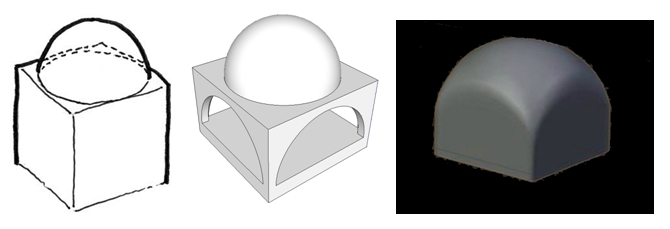

We can conclude, then, that the square, the circle, the cube and the sphere constitute a family of related and more or less interchangeable symbols. But if one asks where on earth is to be found the earliest, most prominent and simplest example of divine architecture combining the circle and the square (or, more precisely, the circle and the cube), the answer has to be—the Kaaba.
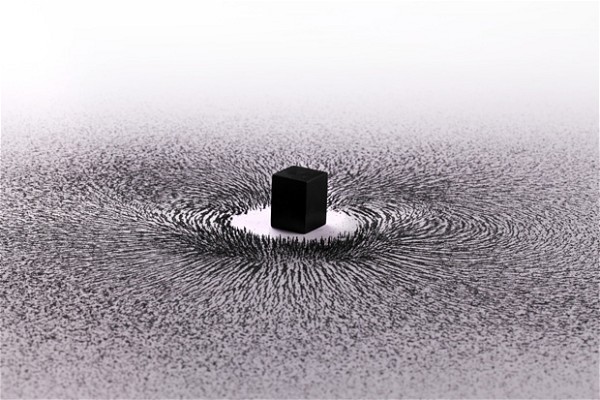
Ahmed Mater: Magnetism III, 2012.
The Monolith and the Cube
The Arabic word Kaaba means, simply: “Cube.” As everyone knows, the Kaaba is situated in Mecca, Saudi Arabia. It is an extremely simple structure, measuring 15 meters high on a 10 m by 12 m base, thus approximating a perfect cube. All year long, it is draped in a jet-black covering, except for a few days during the Major Pilgrimage, when it is draped in white. The color black symbolizes night, deep space (inner or outer), death, and the unknown (including the Invisible World, the unobservable universe, a subset of which is the “dark matter” of the astrophysicists comprising 90 percent of the universe). It also symbolizes wisdom of such things. White is the color of purity, innocence, and of milk, which in Islamic interpretation stands for nourishment, both material and spiritual, and for knowledge, science and wisdom. It also stands for the blinding light of the sun at mid-day, which—as Jung will tell you—is the light of full consciousness, or even super-consciousness.
It should by now be obvious that the Kaaba, in its customary black color, is the exact symbolic equivalent of the Monolith in 2001. [9] Arthur Clarke, the peerless aquanaut of science fiction, has dredged up this amazing symbol from the depths of the psyche. It thus becomes incumbent on us to take a closer look at “the Cube” in Mecca. We must examine its history, the legends surrounding it, its ultimate import—more intensively, perhaps (though not necessarily more exhaustively), than has ever been done before.
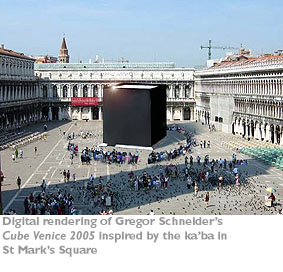
This proposal for a 15-meter-high (50-foot) black cube at the
2005 Venice Biennale was not, ultimately, realized.
2005 Venice Biennale was not, ultimately, realized.
Methodological Notes
Before we proceed, it would be wise to clarify the meanings of such expressions as “ritual,” “myth” and “sacred history” as they are used in this text, in order to avoid any misunderstandings and problems arising from terminology. These are all much-abused concepts. “Ritual” has come to mean the mindless, mechanical repetition of certain acts, “mythic” now means illusory and fictitious, and “sacred history” can be taken as supernatural and thus unreal.
Hence, it would perhaps be best to avoid using these terms altogether, were it not for the fact that ordinary people and experts alike continue to use them in less derogatory senses. According to Joseph Campbell: “A ritual is an organization of mythological symbols...” [10] What, in that case, is myth? Mircea Eliade makes the following very simple equation: “Myth = Paradigmatic Model.” [11] That is, a myth is a model that guides one’s understanding, attitudes and actions. “The myth relates a sacred history,” continues Eliade, “that is, a primordial event” [12] involving gods, demigods, or heros. In Islam, the monotheistic religion par excellence, there can be no question of any divinity other than God, and the heros are prophets. Hence, “sacred history” takes on the meaning of events unfolding in real time and space as a result of the relationship between God and His chosen human beings, the Prophets.
Moslems believe that the Koran is the revealed word of God, and that everything related in it is therefore true, period. That independent written documents have not survived to confirm such events does not detract from their truth; that such documents should have survived over the vast time periods involved is unlikely even if they had been written, which they most probably were not. (In some cases, it would have been impossible.) Even today, living as we do in an information glut and an overflow of documents, events go unrecorded which seem unimportant to us but which posterity might wish to view in a different light. Sacred history, then, depends in this case entirely upon one written document: the Koran, which cannot be gainsaid bearing in mind its Author.
In addition, oral tradition (which at some point became written) has brought down various details and embellishments that help to flesh out the story, and which we have no warrant to disbelieve unless there is a compelling reason. In any case, this is the material we have to work with, and criticism is incapable of providing fresh or more reliable data in exchange.
In sum, then, we shall be looking at some primordial events which serve as paradigmatic models and provide an organization of symbols that guide the thinking and action of human beings.
The Sacred History of the Kaaba Hence, it would perhaps be best to avoid using these terms altogether, were it not for the fact that ordinary people and experts alike continue to use them in less derogatory senses. According to Joseph Campbell: “A ritual is an organization of mythological symbols...” [10] What, in that case, is myth? Mircea Eliade makes the following very simple equation: “Myth = Paradigmatic Model.” [11] That is, a myth is a model that guides one’s understanding, attitudes and actions. “The myth relates a sacred history,” continues Eliade, “that is, a primordial event” [12] involving gods, demigods, or heros. In Islam, the monotheistic religion par excellence, there can be no question of any divinity other than God, and the heros are prophets. Hence, “sacred history” takes on the meaning of events unfolding in real time and space as a result of the relationship between God and His chosen human beings, the Prophets.
Moslems believe that the Koran is the revealed word of God, and that everything related in it is therefore true, period. That independent written documents have not survived to confirm such events does not detract from their truth; that such documents should have survived over the vast time periods involved is unlikely even if they had been written, which they most probably were not. (In some cases, it would have been impossible.) Even today, living as we do in an information glut and an overflow of documents, events go unrecorded which seem unimportant to us but which posterity might wish to view in a different light. Sacred history, then, depends in this case entirely upon one written document: the Koran, which cannot be gainsaid bearing in mind its Author.
In addition, oral tradition (which at some point became written) has brought down various details and embellishments that help to flesh out the story, and which we have no warrant to disbelieve unless there is a compelling reason. In any case, this is the material we have to work with, and criticism is incapable of providing fresh or more reliable data in exchange.
In sum, then, we shall be looking at some primordial events which serve as paradigmatic models and provide an organization of symbols that guide the thinking and action of human beings.
To make sense of the Pilgrimage without its metahistorical precedents would be a vain attempt, so we begin with a short outline.
“The first house built for men,” says God in the Koran, “is the Kaaba in Mecca, which shows the Right Way and is a blessing for the worlds” (3:96).
It is said that the archetypal original of the Kaaba is the House of Splendor (or Prosperity: bayt al-mamoor, mentioned in 52:4) in Heaven. The House of Splendor is the Heavenly Kaaba, and the Kaaba we know is the projection or shadow on earth of this House located in spiritual space. In Sufism, the House of Splendor, or “the house that has been perfectly constructed,” is known as the Heart of the Perfect Man.
Adam saw the House of Splendor in Paradise for the first time in the shape of a tabernacle or shade. Angels were ceaselessly circumambulating the pavilion. This shaded canopy with a seat of honor at its center consisted of a gigantic ruby, supported by four columns of emerald. Inside it was a shining white stone. This stone, consisting of white ruby, was Adam’s throne. When Adam “fell” to earth, this stone likewise descended to where the Kaaba now stands. A better way of saying this might be that like the Kaaba, the stone, too, is a shadow or projection of its heavenly counterpart. The original earthly Kaaba was formed when Adam surrounded this stone with a wall of stones.
Because it absorbed the sins of countless people who touched it down the eons, this white stone became darkened and blackened in time. This is the famous Black Stone that now forms the Kaaba’s Cornerstone on its Eastern corner.
When Adam and Eve were expelled from Heaven, they landed on earth in widely separate geographical locations. They longed for and searched for each other, but it was forty years before they were reunited. In search of Eve, Adam finally arrived in Mecca. Here he first built the Kaaba by surrounding the Black Stone (still white then) with other stones, and then honored it by circumambulating it seven times. From here he proceeded eastward, to the plain now called Arafat. Meanwhile, Eve too was headed in the same direction, and they finally came together on top of the Mount of Mercy at Arafat. A white pillar marks this point today.
The Kaaba (meaning, as we have seen, “Cube”) is the House of God (bayt Allah). This does not mean that God, who is Omnipresent, can be confined in it, but that He has designated it as the locus of veneration for human beings: when Moslems prostrate themselves towards the Kaaba, they are not worshiping the Kaaba’s gray stones or drapery, but God.
The reason that the earthly Kaaba, in contrast to its heavenly archetype, is constructed of stones and earth is due to the fact that Adam, too, was created of clay or earth. A little secret lies buried here.
Even though Adam was made of clay, the angels, who were made of light, were commanded to bow down to the ground to him. Gold, silver and precious stones are not more valuable in God’s sight than clay. A thing gains value only as God values it.
The foundations of the Kaaba were preserved during Noah’s Flood, but with the passage of time all traces of it were obliterated.
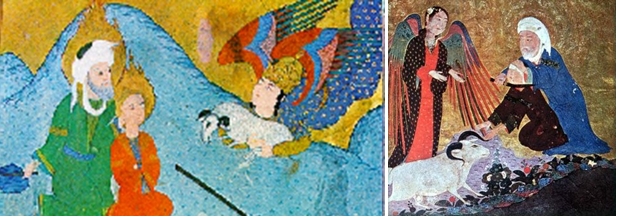
Two Islamic depictions of Abraham's sacrifice. The fiery halo around prophets'
heads used to denote that they "burned" with the spiritual love of God.
heads used to denote that they "burned" with the spiritual love of God.
Abraham and His Family
Ages passed. In time, some say around 1800 BC, a child was born called Abraham, to whom, in turn, two children would be born: Isaac from his wife, Sarah, and Ishmael from Hagar, Sarah’s Egyptian slavewoman (whom Sarah married to Abraham with her blessings, since she herself could not—at that time—give him a son). From Isaac descended all the Prophets down to Jesus, and from Ishmael descended Mohammed. Thus, the Patriarch Abraham is the world-historical pivot around which all the three great monotheistic religions—Judaism, Christianity, and Islam—revolve.
The story of Abraham is related in Genesis, the very first book of the Bible (and of the Torah), and also in the Koran. The Koran vindicates a substantial part of the Bible; it is the Final Testament of God, which supplements and emends the Old and New Testaments. Hence, except for a few details, what follows is also to be found in the Bible.
When Ishmael was born, Sarah became jealous. “Cast out this slave woman with her son,” she told Abraham (Genesis, 21:10). She prevailed upon him to such an extent that Abraham had no choice but to take Hagar and their little child and lead them into the wilderness of Beer-sheba (Gen. 21:14—according to the Bible account, Hagar and her child departed without Abraham). Genesis has it that they traveled further south, and that Ishmael later lived in the wilderness of Paran (Gen. 21:21). The latter is just north of the Gulf of Aqaba, and the former to the northeast of that. But it is possible that Abraham and his little company traveled even further south, and eventually arrived, as Islamic sources relate, in the vicinity of Mecca. Such a journey wouldn’t have fazed Abraham, who had already traveled the whole perimeter of the Fertile Crescent, and he might have wished to conceal Hagar’s whereabouts from Sarah, also because he intended to—and did—visit them from time to time, which would explain the silence of the Bible in this respect.
Of course, there was then no city of Mecca to speak of. God had directed Abraham to lead his wife and baby to what was apparently a desert spot. Unknown to them, this was none other than environs of the Kaaba, where the White (now Black) Stone had descended in the beginning. God instructed Abraham to leave them there, and gave assurance that all would be well with them. So Abraham bade leave of his wife, embraced their little son, and departed with a heavy heart and a lump in his throat.
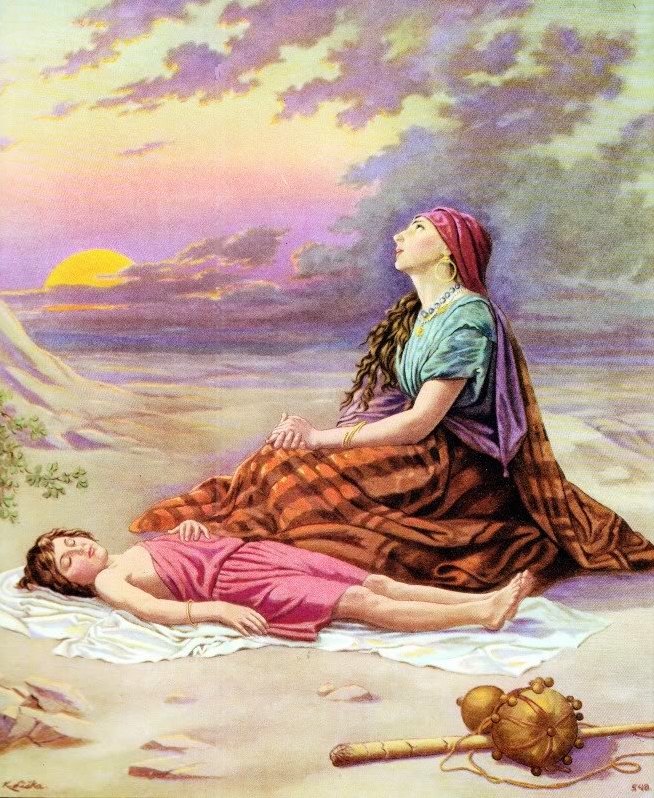 Hagar looked around. There was nothing and no one in sight. She began to wait. Abraham had left them some food and water, but when these ran out there was nothing else around they could eat or drink. In the blinding light of the desert sun, hunger and thirst soon overcame them. Still no one arrived. Time passed. Then Hagar saw that her little boy was about to die of thirst.
Hagar looked around. There was nothing and no one in sight. She began to wait. Abraham had left them some food and water, but when these ran out there was nothing else around they could eat or drink. In the blinding light of the desert sun, hunger and thirst soon overcame them. Still no one arrived. Time passed. Then Hagar saw that her little boy was about to die of thirst.
In desperation she ran up a low hill nearby, in an effort to spy someone—anyone!—who could rescue them. She looked long and hard. As far as the eye could see, there was no one in sight. Her fear mounting, she ran to another hill, about 400 m away, to check if anything could be seen from there. Still no luck.
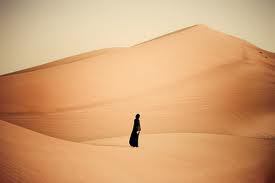 With increasing desperation, Hagar ran seven times from one hill to the other, praying to God for salvation, looking for a trace, however small, of water, trying to find a place from which rescue might arrive. Sweating, panting with increasing exhaustion, she displayed a stupendous struggle for survival. By the time she climbed the second hill for the last time, she was on the verge of collapse.
With increasing desperation, Hagar ran seven times from one hill to the other, praying to God for salvation, looking for a trace, however small, of water, trying to find a place from which rescue might arrive. Sweating, panting with increasing exhaustion, she displayed a stupendous struggle for survival. By the time she climbed the second hill for the last time, she was on the verge of collapse.
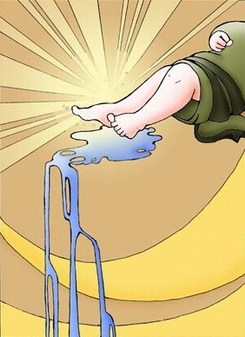 Then God in His mercy told Archangel Gabriel to strike the ground with his wing under the baby’s heel. Suddenly, water gushed forth. Hagar was made aware of it through the strange, humming sound it emitted, and ran over. The water spewed forth, the flow getting fiercer every second, until Hagar felt compelled to cry: “Stop, stop!” The water calmed down at this, and settled into a leisurely bubbling. Zamzam, the name of this water, means either “stop” or “humming.” As Gershom Scholem, the eminent scholar of Jewish mysticism, has noted, the Hebraic root zimzum means “contraction, withdrawal,” [13] which would favor the former meaning. The first hill Hagar ran up is called Safa, and the second Merva (or Marwa).
Then God in His mercy told Archangel Gabriel to strike the ground with his wing under the baby’s heel. Suddenly, water gushed forth. Hagar was made aware of it through the strange, humming sound it emitted, and ran over. The water spewed forth, the flow getting fiercer every second, until Hagar felt compelled to cry: “Stop, stop!” The water calmed down at this, and settled into a leisurely bubbling. Zamzam, the name of this water, means either “stop” or “humming.” As Gershom Scholem, the eminent scholar of Jewish mysticism, has noted, the Hebraic root zimzum means “contraction, withdrawal,” [13] which would favor the former meaning. The first hill Hagar ran up is called Safa, and the second Merva (or Marwa).
Only from great ordeals do great results follow. Moses was at the end of his tether when he saw the Burning Bush. Jonah experienced his Ascension while in the belly of the whale, and Mohammed after being stoned and driven from the town of Ta'if. By her tribulations, Hagar had not only saved her son, she had also presented humanity with a spring in the middle of the desert that would flow for the rest of time. She had been a boon to untold numbers of human beings.
Hagar and Ishmael survived on the Zamzam water until a nomadic tribe came by. Seeing the water, they decided to settle there, and because they were there from the start, Hagar and Ishmael possessed ownership rights of the water, assuring them a distinguished status in the tribe.
The Sacrifice
The story of the Sacrifice is told in Genesis, 22:1-19. According to the Bible, this sacrifice involved Abraham’s “one and only son, Isaac” (Gen. 22:2). There is a problem with this statement, however, in that Isaac was not born until Ishmael, Abraham’s firstborn son, was 14. So either the former or the latter part of the statement can be true. Isaac is the second son of Abraham, not the first. The son involved in the sacrifice is not mentioned by name in the Koran; eminent Moslems have tended to the idea that it was Isaac, while others have said it was Ishmael. In view of the fact that Ishmael was Abraham’s “one and only son” for 14 years, and also because it fits the geographical facts better, we shall follow the customary procedure and relate the story in terms of Ishmael.
As Ishmael grew up, Abraham visited them from time to time. He had wished dearly to have offspring, and little Ishmael was the apple of his eye. Because they were separated for most of the time, his love and longing for Ishmael grew until it became almost an obsession. It reached a point where it was about to displace the love of God in Abraham’s heart. The time was ripe to do something about it.
Before Ishmael was born, Abraham, advancing in age as Sarah was, had vowed to God that if only he could have children, he would sacrifice his firstborn to Him. Sacrifice of the firstborn child was the custom until then. But Abraham’s great love for Ishmael prevented him from fulfilling his promise; he kept postponing it until later, and this “later” stretched off indefinitely. Finally one night, at a time when he was with Ishmael and Hagar, Abraham had a dream.
In this dream, Abraham saw himself in the act of sacrificing Ishmael. He woke up with a start. He was greatly disturbed by the dream, but tried to put it out of his mind. The dream would not go away, however. The next night Abraham saw the same dream, and on the third night he saw it yet again.
Abraham realized that he was being called upon to fulfill his promise, and that he could not postpone it any longer. So the next morning, he took Ishmael, who was ten years old by then, and went off into the wilderness toward the East. He bore a sharp knife with him.
A while after their departure, Satan, the Adversary of mankind, assumed the form of a man and came to Hagar. “Do you know where Abraham has taken your only son?” he asked. “He is about to sacrifice Ishmael.”
Hagar was taken aback. “And why should he do that?” she asked.
“Because the Lord has commanded him to do so.”
“Abraham would never do such a thing unless he were indeed commanded by the Lord,” said Hagar with mounting anger. “If what you say is true, we all must submit to the Lord, and you are trying to make me disobey Him. If not, then you are lying. In either case, you must be the Devil,” she cried, and threw a stone at him.
Thus foiled, the Devil departed. He next approached Abraham. Abraham had left Ishmael sitting someplace and wandered off, so he was alone.
“I know what you intend to do,” the Devil told him. “Desist from this act of unspeakable cruelty.”
“Are you trying to make me disobey God’s orders, and further, to break my vow? Begone, Satan!” And Abraham threw a second stone at the Devil.
Satan mused; things were beginning to look pretty bleak. Finally, he approached Ishmael, who was sitting where his father had left him.
“Do you know why your father has brought you out into this wilderness? He intends to sacrifice you to God.”
“If those are God’s orders, we all must submit to him,” cried the little boy. “Get away from me, whoever you are!” And he threw a third stone at the Devil. Thus driven off, the schemes of the Devil were brought to nothing, and he departed in failure.
Abraham then approached Ishmael. “My dearest son, one and only,” he said, “I have a confession to make. Do you know why I brought you out into this wilderness? I once made a promise to the Lord before you were born that I would sacrifice you to Him. For three nights in succession, God, whom I love so much, has reminded me of my vow, and much as I love you, I can see no recourse except to obey His orders.”
“Father, dearest,” said Ishmael, “if such is the commandment of the Lord, of course we have no way out but to submit to it. But tell me, how did God make His desire known to you?”
“In my dream.”
“If you really love God that much, Father, tell me: how could you sleep in His presence, that you should have a dream? But you will find me an obedient son, both to my father and to God. Tie me up and blindfold me, however, so that I may not resist you involuntarily when the time comes.”
With tears in his eyes, Abraham did as his son wished.
We must pause to consider for a moment what a great trial this was, both for Abraham and for Ishmael. It is the most difficult thing for a father to sacrifice his only son whom he loves so much, and also for the son to submit to it. Yet great good would follow from it, as we shall see.
Finally, everything was ready. Abraham took the knife, and struck Ishmael’s throat with all the force he could muster in order to spare him a painful death.
The knife, however, simply turned around in his palm. Abraham was astonished. Had the blade, which he had sharpened so carefully, become inexplicably blunted? He decided to test it on a large rock nearby.
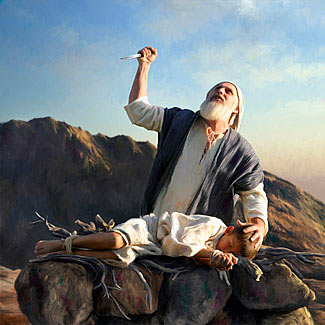 He struck the rock, and behold, the knife sliced through it as if it were made of butter. Abraham decided there was nothing wrong with the blade, and attempted the sacrifice a second time. Again the same thing happened.
He struck the rock, and behold, the knife sliced through it as if it were made of butter. Abraham decided there was nothing wrong with the blade, and attempted the sacrifice a second time. Again the same thing happened.
Then, at that moment, Abraham saw the Angel of the Lord descending with a ram. Gabriel placed it in front of Abraham. “I bring you greetings from your Lord, Abraham,” the angel spoke. “God is pleased that you have kept your promise. But it is His wish that you should sacrifice this ram in Ishmael’s stead, so that you may all be spared, and the custom of sacrificing the firstborn be removed forever from your people.”
 Both father and son were overwhelmed with gratitude. Crying, they embraced each other, and gave thanks to the Lord. While they were thus occupied, the ram ran off in the direction of Mina, where they were finally able to corner it and accomplish the sacrifice.
Both father and son were overwhelmed with gratitude. Crying, they embraced each other, and gave thanks to the Lord. While they were thus occupied, the ram ran off in the direction of Mina, where they were finally able to corner it and accomplish the sacrifice.
And this is how the custom of human sacrifice was ended. If Abraham had sacrificed his son, the custom would have become even further entrenched, and all firstborn children of all the Faithful would have had to be sacrificed. But many of the Prophets, including Jesus and Mohammed, were firstborn, and so have many great men been since then. This single event of the sacrifice, we now begin to realize, at one stroke rewrote the whole of human history.
Ages passed. In time, some say around 1800 BC, a child was born called Abraham, to whom, in turn, two children would be born: Isaac from his wife, Sarah, and Ishmael from Hagar, Sarah’s Egyptian slavewoman (whom Sarah married to Abraham with her blessings, since she herself could not—at that time—give him a son). From Isaac descended all the Prophets down to Jesus, and from Ishmael descended Mohammed. Thus, the Patriarch Abraham is the world-historical pivot around which all the three great monotheistic religions—Judaism, Christianity, and Islam—revolve.
The story of Abraham is related in Genesis, the very first book of the Bible (and of the Torah), and also in the Koran. The Koran vindicates a substantial part of the Bible; it is the Final Testament of God, which supplements and emends the Old and New Testaments. Hence, except for a few details, what follows is also to be found in the Bible.
When Ishmael was born, Sarah became jealous. “Cast out this slave woman with her son,” she told Abraham (Genesis, 21:10). She prevailed upon him to such an extent that Abraham had no choice but to take Hagar and their little child and lead them into the wilderness of Beer-sheba (Gen. 21:14—according to the Bible account, Hagar and her child departed without Abraham). Genesis has it that they traveled further south, and that Ishmael later lived in the wilderness of Paran (Gen. 21:21). The latter is just north of the Gulf of Aqaba, and the former to the northeast of that. But it is possible that Abraham and his little company traveled even further south, and eventually arrived, as Islamic sources relate, in the vicinity of Mecca. Such a journey wouldn’t have fazed Abraham, who had already traveled the whole perimeter of the Fertile Crescent, and he might have wished to conceal Hagar’s whereabouts from Sarah, also because he intended to—and did—visit them from time to time, which would explain the silence of the Bible in this respect.
Of course, there was then no city of Mecca to speak of. God had directed Abraham to lead his wife and baby to what was apparently a desert spot. Unknown to them, this was none other than environs of the Kaaba, where the White (now Black) Stone had descended in the beginning. God instructed Abraham to leave them there, and gave assurance that all would be well with them. So Abraham bade leave of his wife, embraced their little son, and departed with a heavy heart and a lump in his throat.
 Hagar looked around. There was nothing and no one in sight. She began to wait. Abraham had left them some food and water, but when these ran out there was nothing else around they could eat or drink. In the blinding light of the desert sun, hunger and thirst soon overcame them. Still no one arrived. Time passed. Then Hagar saw that her little boy was about to die of thirst.
Hagar looked around. There was nothing and no one in sight. She began to wait. Abraham had left them some food and water, but when these ran out there was nothing else around they could eat or drink. In the blinding light of the desert sun, hunger and thirst soon overcame them. Still no one arrived. Time passed. Then Hagar saw that her little boy was about to die of thirst. In desperation she ran up a low hill nearby, in an effort to spy someone—anyone!—who could rescue them. She looked long and hard. As far as the eye could see, there was no one in sight. Her fear mounting, she ran to another hill, about 400 m away, to check if anything could be seen from there. Still no luck.
 With increasing desperation, Hagar ran seven times from one hill to the other, praying to God for salvation, looking for a trace, however small, of water, trying to find a place from which rescue might arrive. Sweating, panting with increasing exhaustion, she displayed a stupendous struggle for survival. By the time she climbed the second hill for the last time, she was on the verge of collapse.
With increasing desperation, Hagar ran seven times from one hill to the other, praying to God for salvation, looking for a trace, however small, of water, trying to find a place from which rescue might arrive. Sweating, panting with increasing exhaustion, she displayed a stupendous struggle for survival. By the time she climbed the second hill for the last time, she was on the verge of collapse.  Then God in His mercy told Archangel Gabriel to strike the ground with his wing under the baby’s heel. Suddenly, water gushed forth. Hagar was made aware of it through the strange, humming sound it emitted, and ran over. The water spewed forth, the flow getting fiercer every second, until Hagar felt compelled to cry: “Stop, stop!” The water calmed down at this, and settled into a leisurely bubbling. Zamzam, the name of this water, means either “stop” or “humming.” As Gershom Scholem, the eminent scholar of Jewish mysticism, has noted, the Hebraic root zimzum means “contraction, withdrawal,” [13] which would favor the former meaning. The first hill Hagar ran up is called Safa, and the second Merva (or Marwa).
Then God in His mercy told Archangel Gabriel to strike the ground with his wing under the baby’s heel. Suddenly, water gushed forth. Hagar was made aware of it through the strange, humming sound it emitted, and ran over. The water spewed forth, the flow getting fiercer every second, until Hagar felt compelled to cry: “Stop, stop!” The water calmed down at this, and settled into a leisurely bubbling. Zamzam, the name of this water, means either “stop” or “humming.” As Gershom Scholem, the eminent scholar of Jewish mysticism, has noted, the Hebraic root zimzum means “contraction, withdrawal,” [13] which would favor the former meaning. The first hill Hagar ran up is called Safa, and the second Merva (or Marwa). Only from great ordeals do great results follow. Moses was at the end of his tether when he saw the Burning Bush. Jonah experienced his Ascension while in the belly of the whale, and Mohammed after being stoned and driven from the town of Ta'if. By her tribulations, Hagar had not only saved her son, she had also presented humanity with a spring in the middle of the desert that would flow for the rest of time. She had been a boon to untold numbers of human beings.
Hagar and Ishmael survived on the Zamzam water until a nomadic tribe came by. Seeing the water, they decided to settle there, and because they were there from the start, Hagar and Ishmael possessed ownership rights of the water, assuring them a distinguished status in the tribe.
The Sacrifice
The story of the Sacrifice is told in Genesis, 22:1-19. According to the Bible, this sacrifice involved Abraham’s “one and only son, Isaac” (Gen. 22:2). There is a problem with this statement, however, in that Isaac was not born until Ishmael, Abraham’s firstborn son, was 14. So either the former or the latter part of the statement can be true. Isaac is the second son of Abraham, not the first. The son involved in the sacrifice is not mentioned by name in the Koran; eminent Moslems have tended to the idea that it was Isaac, while others have said it was Ishmael. In view of the fact that Ishmael was Abraham’s “one and only son” for 14 years, and also because it fits the geographical facts better, we shall follow the customary procedure and relate the story in terms of Ishmael.
As Ishmael grew up, Abraham visited them from time to time. He had wished dearly to have offspring, and little Ishmael was the apple of his eye. Because they were separated for most of the time, his love and longing for Ishmael grew until it became almost an obsession. It reached a point where it was about to displace the love of God in Abraham’s heart. The time was ripe to do something about it.
Before Ishmael was born, Abraham, advancing in age as Sarah was, had vowed to God that if only he could have children, he would sacrifice his firstborn to Him. Sacrifice of the firstborn child was the custom until then. But Abraham’s great love for Ishmael prevented him from fulfilling his promise; he kept postponing it until later, and this “later” stretched off indefinitely. Finally one night, at a time when he was with Ishmael and Hagar, Abraham had a dream.
In this dream, Abraham saw himself in the act of sacrificing Ishmael. He woke up with a start. He was greatly disturbed by the dream, but tried to put it out of his mind. The dream would not go away, however. The next night Abraham saw the same dream, and on the third night he saw it yet again.
Abraham realized that he was being called upon to fulfill his promise, and that he could not postpone it any longer. So the next morning, he took Ishmael, who was ten years old by then, and went off into the wilderness toward the East. He bore a sharp knife with him.
A while after their departure, Satan, the Adversary of mankind, assumed the form of a man and came to Hagar. “Do you know where Abraham has taken your only son?” he asked. “He is about to sacrifice Ishmael.”
Hagar was taken aback. “And why should he do that?” she asked.
“Because the Lord has commanded him to do so.”
“Abraham would never do such a thing unless he were indeed commanded by the Lord,” said Hagar with mounting anger. “If what you say is true, we all must submit to the Lord, and you are trying to make me disobey Him. If not, then you are lying. In either case, you must be the Devil,” she cried, and threw a stone at him.
Thus foiled, the Devil departed. He next approached Abraham. Abraham had left Ishmael sitting someplace and wandered off, so he was alone.
“I know what you intend to do,” the Devil told him. “Desist from this act of unspeakable cruelty.”
“Are you trying to make me disobey God’s orders, and further, to break my vow? Begone, Satan!” And Abraham threw a second stone at the Devil.
Satan mused; things were beginning to look pretty bleak. Finally, he approached Ishmael, who was sitting where his father had left him.
“Do you know why your father has brought you out into this wilderness? He intends to sacrifice you to God.”
“If those are God’s orders, we all must submit to him,” cried the little boy. “Get away from me, whoever you are!” And he threw a third stone at the Devil. Thus driven off, the schemes of the Devil were brought to nothing, and he departed in failure.
Abraham then approached Ishmael. “My dearest son, one and only,” he said, “I have a confession to make. Do you know why I brought you out into this wilderness? I once made a promise to the Lord before you were born that I would sacrifice you to Him. For three nights in succession, God, whom I love so much, has reminded me of my vow, and much as I love you, I can see no recourse except to obey His orders.”
“Father, dearest,” said Ishmael, “if such is the commandment of the Lord, of course we have no way out but to submit to it. But tell me, how did God make His desire known to you?”
“In my dream.”
“If you really love God that much, Father, tell me: how could you sleep in His presence, that you should have a dream? But you will find me an obedient son, both to my father and to God. Tie me up and blindfold me, however, so that I may not resist you involuntarily when the time comes.”
With tears in his eyes, Abraham did as his son wished.
We must pause to consider for a moment what a great trial this was, both for Abraham and for Ishmael. It is the most difficult thing for a father to sacrifice his only son whom he loves so much, and also for the son to submit to it. Yet great good would follow from it, as we shall see.
Finally, everything was ready. Abraham took the knife, and struck Ishmael’s throat with all the force he could muster in order to spare him a painful death.
The knife, however, simply turned around in his palm. Abraham was astonished. Had the blade, which he had sharpened so carefully, become inexplicably blunted? He decided to test it on a large rock nearby.
 He struck the rock, and behold, the knife sliced through it as if it were made of butter. Abraham decided there was nothing wrong with the blade, and attempted the sacrifice a second time. Again the same thing happened.
He struck the rock, and behold, the knife sliced through it as if it were made of butter. Abraham decided there was nothing wrong with the blade, and attempted the sacrifice a second time. Again the same thing happened. Then, at that moment, Abraham saw the Angel of the Lord descending with a ram. Gabriel placed it in front of Abraham. “I bring you greetings from your Lord, Abraham,” the angel spoke. “God is pleased that you have kept your promise. But it is His wish that you should sacrifice this ram in Ishmael’s stead, so that you may all be spared, and the custom of sacrificing the firstborn be removed forever from your people.”
 Both father and son were overwhelmed with gratitude. Crying, they embraced each other, and gave thanks to the Lord. While they were thus occupied, the ram ran off in the direction of Mina, where they were finally able to corner it and accomplish the sacrifice.
Both father and son were overwhelmed with gratitude. Crying, they embraced each other, and gave thanks to the Lord. While they were thus occupied, the ram ran off in the direction of Mina, where they were finally able to corner it and accomplish the sacrifice. And this is how the custom of human sacrifice was ended. If Abraham had sacrificed his son, the custom would have become even further entrenched, and all firstborn children of all the Faithful would have had to be sacrificed. But many of the Prophets, including Jesus and Mohammed, were firstborn, and so have many great men been since then. This single event of the sacrifice, we now begin to realize, at one stroke rewrote the whole of human history.
How the Kaaba was Rebuilt
The Great Kaaba was built in its present shape for the first time by Abraham and Ishmael. After some years had passed, the Lord commanded Abraham: “Build an exalted House for Me.”
Hence, Abraham set out on this mission, and after a while arrived in Mecca. Ishmael was by now a mature man. Abraham told Ishmael about his new task, and requested his help. But since no trace of the old Kaaba was left, they had no idea where to begin. By dint of divine intervention, a roughly square-shaped cloud appeared, and hovered over the present spot of the Kaaba, marking out its borders to their view by the shadow it cast on the ground. While Ishmael quarried stones from the hills, Abraham worked on the masonry. When the walls became too high to lay stones, Abraham used a stone to elevate himself. This was the same rock that he used to mount his animals when he was visiting Hagar and Ishmael, and is today preserved at the “Station of Abraham” in the Holy Sanctuary facing the door of the Kaaba. Climbing on top of the rock, Abraham was able to raise the walls higher. The famous Black Stone was used as the eastern cornerstone. They left it as four walls without a roof, but today the Kaaba is covered by a flat roof supported by three wooden pillars on the inside.
In time the Kaaba, always an object of veneration, became the center of pagan practices and ceremonies. People could not stick to the strict monotheism of Abraham and Ishmael, and degenerated into polytheism and the worship of stones. At the time when Mecca was conquered by Mohammed (630 AD), it is said to have sheltered 360 idols. The Prophet of God removed these idols from the inside, and today it stands empty, except for calligraphic prayers hung on the walls and a maintenance staircase that leads to the roof. Its door, the only entrance, stands 2 m above ground level and is accessed via a portable stairway. The covering of black silk cloth is decorated with verses from the Koran embroidered in gold bands.

The Great Kaaba was built in its present shape for the first time by Abraham and Ishmael. After some years had passed, the Lord commanded Abraham: “Build an exalted House for Me.”
Hence, Abraham set out on this mission, and after a while arrived in Mecca. Ishmael was by now a mature man. Abraham told Ishmael about his new task, and requested his help. But since no trace of the old Kaaba was left, they had no idea where to begin. By dint of divine intervention, a roughly square-shaped cloud appeared, and hovered over the present spot of the Kaaba, marking out its borders to their view by the shadow it cast on the ground. While Ishmael quarried stones from the hills, Abraham worked on the masonry. When the walls became too high to lay stones, Abraham used a stone to elevate himself. This was the same rock that he used to mount his animals when he was visiting Hagar and Ishmael, and is today preserved at the “Station of Abraham” in the Holy Sanctuary facing the door of the Kaaba. Climbing on top of the rock, Abraham was able to raise the walls higher. The famous Black Stone was used as the eastern cornerstone. They left it as four walls without a roof, but today the Kaaba is covered by a flat roof supported by three wooden pillars on the inside.
In time the Kaaba, always an object of veneration, became the center of pagan practices and ceremonies. People could not stick to the strict monotheism of Abraham and Ishmael, and degenerated into polytheism and the worship of stones. At the time when Mecca was conquered by Mohammed (630 AD), it is said to have sheltered 360 idols. The Prophet of God removed these idols from the inside, and today it stands empty, except for calligraphic prayers hung on the walls and a maintenance staircase that leads to the roof. Its door, the only entrance, stands 2 m above ground level and is accessed via a portable stairway. The covering of black silk cloth is decorated with verses from the Koran embroidered in gold bands.

What's inside the Kaaba? An enigma for generations of Moslems, this is no longer unknown. In pagan times, it housed a number of idols. The Prophet of God threw them all out in 630 AD. Today, there are three pillars that support the roof inside the Kaaba, a stairwell that leads up to the flat roof, and a few Arabic-script prayers on the inside walls. An animation can be found here. A real-life, though low-resolution, video is here. Prostration toward the Kaaba is actually prostration to God, not to this stone structure that houses practically nothing inside.
The Call to All Human Beings
When the construction work was completed, father and son prayed as follows:
“Dear Lord, accept this House we have constructed as a token of our servanthood. Surely You hear our prayers, and know our intentions. Make us obedient to You, and bring forth a nation from us that submits to You. Show us the procedure of the Pilgrimage. Accept our repentance. Surely You alone are the Most Merciful, the greatest Acceptor of Repentance.
“Dear Lord, send [our descendants] a Prophet from among them who will recite them Your verses; teach them the Book and the Wisdom, and purify them. Surely You are the Lofty, the Wise” (2:128-30).
God accepted this prayer of Abraham and Ishmael, and sent their descendants the final Prophet, Mohammed, who established the religion of Islam.
Archangel Gabriel came to them, and taught them how to perform the Pilgrimage. They circumambulated the Kaaba seven times and ran between the Twin Hills of Safa and Merva seven times, just as Adam and Hagar had done before them.
Just when Abraham was about to leave, he received the mission to call human beings to the Pilgrimage. The Lord Almighty declared:
“Purify my House. Call human beings to the Pilgrimage. They will come to you on foot or astride from far distances” (22:26-27).
Abraham asked: “My Lord, how far can my voice reach?”
“To call out the invitation belongs to you, to make it heard belongs to Me.”
So Abraham turned back, stood on top of the Station of Abraham, plugged his ears with his fingers, and to each of the four points of the compass, he called out:
“Human beings, your Lord has built a House for you, and commanded you to visit (hajj : [14] Pilgrimage) it. Be sure to visit it in Pilgrimage.”
It is said that Abraham’s call transcended time and space. It reached all places and all times, past and present. Of those in whose destiny the Pilgrimage lies, not one soul remained who did not reply: “Here I am, my God, here I am.” Everyone repeated this reply once if they would perform the Pilgrimage once in their lifetime, twice if twice, and so on.
Note that God did not call simply Moslems, but “all human beings,” to the Pilgrimage. Therefore, everyone should be allowed to enter the Holy Land. Jews and Christians, in whose holy books Abraham figures so prominently, should be allowed to perform the Pilgrimage too if they want to, or come visiting even if they are just curious. It is to be hoped that the Hajj Administration will review and revise its position on this matter in the future.
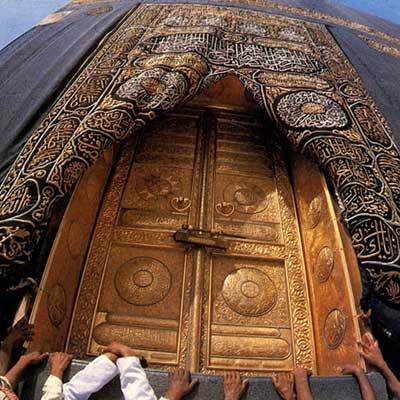
The Door of Hope ("Only those who lack faith despair of God's mercy"—12:87).
The Procedure of the Pilgrimage
Such, in its basics, is the story. The main verses dealing with the Pilgrimage in the Koran are 2:196-200, 3:96-7, 5:95-7, and 22:26-33. When Mohammed received his Prophethood, he reorganized the Pilgrimage that had been continuing from time immemorial, cleared it of spurious accretions, and instituted it in the way it is performed today. It is one of the Five Pillars—the five principal requirements—of Islam that one should, provided one has the material resources, perform the Pilgrimage once in one’s lifetime.
You have been preparing expectantly for this day for a long time, or else it may happen with astonishing suddenness. Time was when the Pilgrimage was no task to be undertaken lightly. People used to travel for months, on foot or on primitive vehicles, risking highway robbery and even death. Nowadays, it’s a piece of cake. You land in Jiddah by plane, or arrive by ship or by bus. From the moment you start your journey, you are traveling in non-ordinary space and non-ordinary time. This will make itself felt to you by subtle, telltale signs.
Taking a bus to Mecca, you arrive at the border of the Sacred Territory. This is a circular area with the Kaaba as its center, and with a radius of about 30 km. You get off the bus at one of the facilities erected around its perimeter, and proceed to enter Restriction (the ihram). For men, this consists of donning two pieces of seamless white cotton terry cloth, which are wrapped around the waist and shoulders. It resembles a shroud, and signifies that one is about to go before one’s Lord as one will after death, at the Resurrection. Women can wear a dress that covers their extremities properly. From here on, until you finish your Pilgrimage and take off the garment, it is forbidden to engage in sexual intercourse, to harm or kill any living thing, to cut your fingernails, and even to pull out your hair, as cells would be dying. These are all requirements of the Restriction.
Getting on the bus again, you continue on your way to Mecca, chanting: “Here I am, my God, here I am,” giving evidence that you have come to fulfill the commandment of the Lord. You first go to the hotel booked for you, then proceed with your group to the Holy Sanctuary. This consists of the Holy Mosque, a structure of two nested squares, a two-story, arched collonade with an inner courtyard the size of a football field. At the center of this courtyard stands the House of God—the Kaaba.
The Holy Mosque is a sight to be seen. You enter it and proceed toward the courtyard. Your guides have told you to keep your eyes lowered, so that your first glance at the Kaaba will reveal its brilliant splendor to you. You have also been told that whatever wish you make at this first sighting will come true.
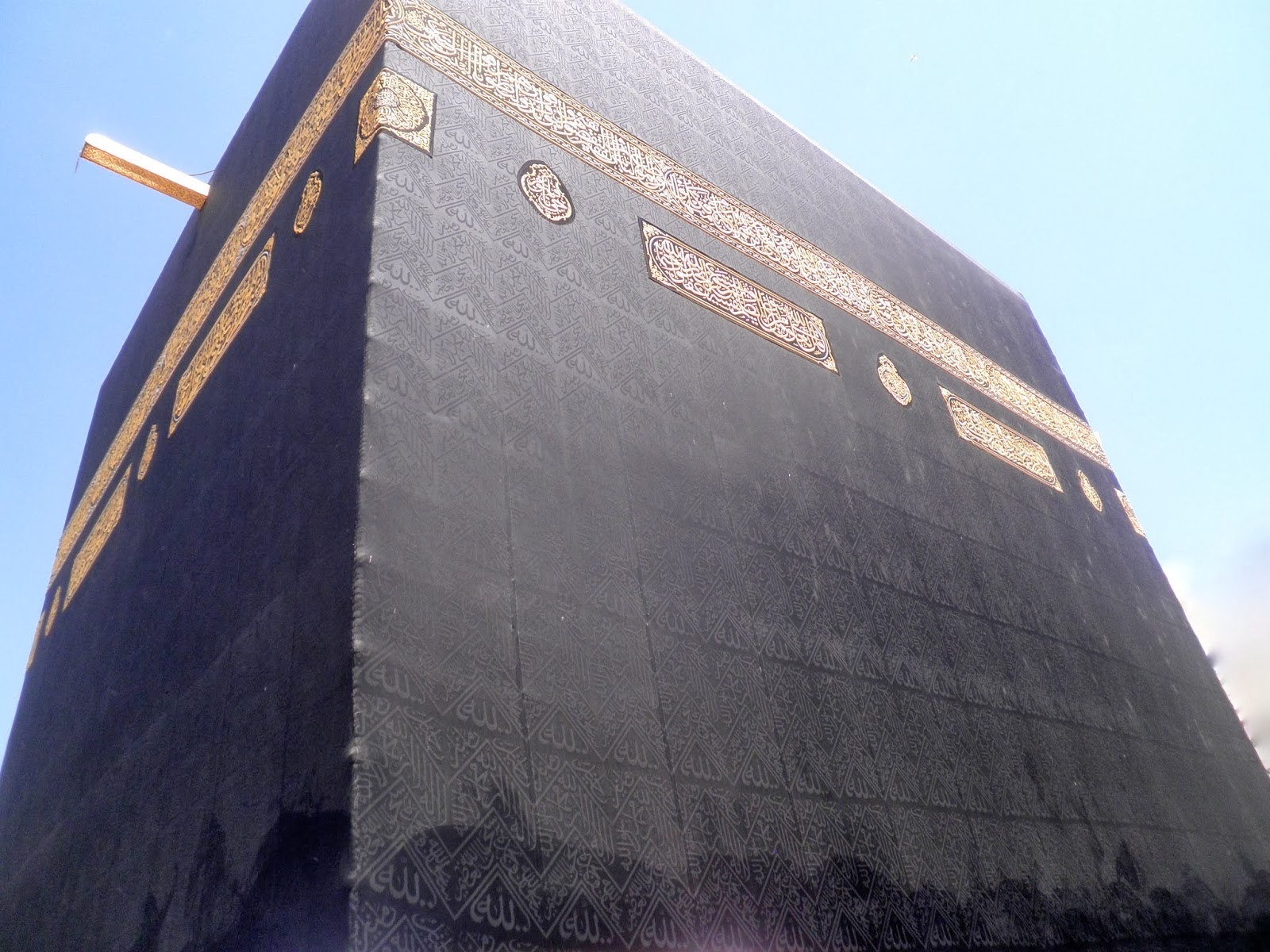
The Kaaba, up close and personal. (The pipe at top left is for draining rainwater from the roof.)
You raise your eyes, and there it is—the Kaaba in all its dazzling radiance, draped in black if it is the time of the Lesser Pilgrimage (practically all the year round), in white if it is time for the Great Pilgrimage. The courtyard is paved with white marble, so clean you can walk on it barefoot. You may sense an invisible vortex of energy extending about halfway up the Kaaba. You proceed to the starting point, which is the Black Stone, the eastern Cornerstone encased in silver with a diameter of about 20 cm. A line of dark marble extending radially outward marks its direction. (The diagonals of the Kaaba seen from above point North-South and East-West, respectively.)
You start your circumambulation by kissing the Black Stone if you can. This was started by the Prophet, and some have had reservations about it. Omar the second Caliph, for instance, remarked: “You are just a stone, and I wouldn’t kiss you if the Prophet hadn’t done so.” It is kissed because it is held to be sacred, not because it is a stone. Nowadays, however, its vicinity is so crowded that you can start just by standing on the dark marble line and saluting the Black Stone. You state your intention—for instance, “I will now begin the Minor Pilgrimage.”
Then, turning so that the Black Stone stands to your left, you perform seven leftward circuits around the Kaaba, flowing with the crowd at a pace that is neither too slow nor too fast, reciting the prayers appropriate to each circuit, saluting the Black Stone again as you reach your starting line. Thus, you follow in the footsteps of Adam at the beginning, of Abraham and Ishmael, and of Mohammed, the last Prophet.
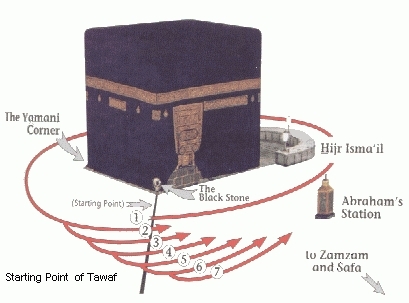
The seven circumambulations (tawaf) around the Kaaba.
Having finished the circuits, you perform a Prayer near the Station of Abraham, offer your supplications, and then proceed to the Zamzam well, which has now been moved underground. The authorities have also provided numerous plastic dispensers and cups, so you can drink Zamzam wherever you are in the Holy Mosque.
You taste the Zamzam, and discover that contrary to what you have read in some sources, its taste is not brackish, but delicious. You drink your fill, and proceed to the hill of Safa, which is also where the Prophet of God made his mission public for the first time. A long, two-story gallery covers the space between the Twin Hills, and a central aisle has been reserved for the sick and elderly confined to wheelchairs. The corridor extends almost exactly North-South, though not entirely.
You then climb the Safa Hill, make a statement of your intention, and begin the Labor (say). You start walking toward Merva, reciting the appropriate prayer at each pass, running part of the way that is indicated by green lights, climbing Merva, returning to Safa three times and going to Merva four times. Thus, you make seven trips between the Twin Hills.

The hills of Safa (left) and Marwa (right), between which the Pilgrims walk or run seven times (or 3.5 full circuits), emerging from Marwa at the end.

The Corridor of Labor (Ar. say) that connects the two hills.
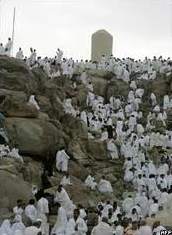
Arriving at Merva for the last time, you have your hair cut—just a few locks will do—and then return to your hotel to remove your garment, if you have performed the Lesser Pilgrimage. Otherwise, you continue the Great Pilgrimage.
Southeast from Mecca is, first: Mina, next: Muzdalifa, and last: Arafat, not exactly along a straight line.
You go directly to the easternmost location first: Arafat, where the Mount of Mercy is. You will remain standing at or near this Mount from noon until sundown, bearing witness to your Lord, obeying His call and praying, commemorating the reunion of Adam and Eve and the beginning of the human race. This is also where the Prophet of God delivered the Farewell Sermon during his last Pilgrimage.
In the evening you go to the plain of Muzdalifa, here to gather pebbles for your next task. When morning comes, you continue on your way to Mina. There are three pillars here symbolizing the Devil. Just as Abraham, Hagar and Ishmael did before you, you throw seven pebbles at each of the three pillars.
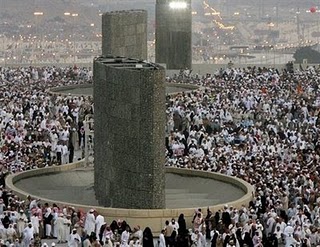
The three stone pillars (jamras) representing the devil.
Next, you sacrifice a ram—professional butchers can do it for you—as Abraham did once upon a time, and have your head shaven if you are male. This is the time of the Festival of the Sacrifice. (The other Islamic festivity is the Ramadan Festival, celebrating the end of the Fasting period and signaling that the Grace of the Lord has been harvested.) Those in other Islamic lands participate in the Pilgrimage activities by sacrificing a ram, and distributing the fresh meat to the poor and needy. After this, the Pilgrimage is finished, and you can return to your hotel to take off your special attire.
It is highly recommended to visit the Prophet’s final resting place in Medina afterwards, to pay homage to him most carefully and with the best of manners (and also to the martyrs and other luminaries resting in the “Eternal Garden” nearby). There, some gnostics are blessed enough to be engulfed in the Presence of the Prophet.
Of course, this account leaves out many details, but this—in brief—is the sequence of events in the Pilgrimage. It is no picnic but, after all, hard work, and the younger you go, the easier it will be for you. Tired but exhilarated, you will now return home, where people will greet you with a special respect reserved for Pilgrims (hajji). From now on, you should be more careful in all your words and deeds, for the merit you have gained—or the virtue you have earned—needs to be preserved with a dignity becoming of that station.
It is highly recommended to visit the Prophet’s final resting place in Medina afterwards, to pay homage to him most carefully and with the best of manners (and also to the martyrs and other luminaries resting in the “Eternal Garden” nearby). There, some gnostics are blessed enough to be engulfed in the Presence of the Prophet.
Of course, this account leaves out many details, but this—in brief—is the sequence of events in the Pilgrimage. It is no picnic but, after all, hard work, and the younger you go, the easier it will be for you. Tired but exhilarated, you will now return home, where people will greet you with a special respect reserved for Pilgrims (hajji). From now on, you should be more careful in all your words and deeds, for the merit you have gained—or the virtue you have earned—needs to be preserved with a dignity becoming of that station.
So far we have dealt with the sacred history of the Kaaba, the primordial events surrounding it, and the exoteric actions deriving from them. We must press on further, however, if we wish to attain a better understanding. We have not yet looked at the esoteric aspect, the organization of paradigmatic symbols, and what these symbols mean. This, then, is the task we must tackle next.
[1] Robert Scholes & Eric S. Rabkin, Science Fiction: History-Science-Vision (New York: Oxford University Press, 1977), pp. 165-69, 220.
[2] Time, 3.17.1997, p. 82.
[3] C. G. Jung, Man and his Symbols (New York: Doubleday, 1964), as well as Jung's other writings.
[4] Mircea Eliade, The Forge and the Crucible (New York: Harper Torchbooks, 1971) [1956], p. 43.
[5] Alan Watts, Myth and Ritual in Christianity (London: Thames & Hudson, 1983) [1954], p. 244.
[6] Kathleen Freeman (ed.), Ancilla to the Pre-Socratic Philosophers (Oxford, 1948).
[7] See the Richard Wilhelm translation of the I Ching, K'un, "the Receptive."
[8]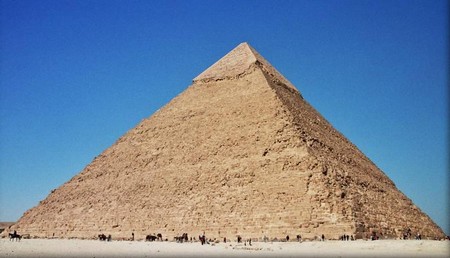 An alternative structure to the hemispherical dome is the four-sided pyramid with a square base, the shape of the Egyptian pyramids, which is another form of the Cosmic Mountain (see below). The pyramid is, in fact, the alchemists' diagonally divided square expanded into three dimensions—the four corners representing the four elements of creation, with the quintessence, the Source, at the apex. This is mentioned because "The Sentinel," on which 2001 was based, involved a pyramid instead of the Monolith. Many temples and buildings involve such a pyramid resting on a cube.
An alternative structure to the hemispherical dome is the four-sided pyramid with a square base, the shape of the Egyptian pyramids, which is another form of the Cosmic Mountain (see below). The pyramid is, in fact, the alchemists' diagonally divided square expanded into three dimensions—the four corners representing the four elements of creation, with the quintessence, the Source, at the apex. This is mentioned because "The Sentinel," on which 2001 was based, involved a pyramid instead of the Monolith. Many temples and buildings involve such a pyramid resting on a cube.
 An alternative structure to the hemispherical dome is the four-sided pyramid with a square base, the shape of the Egyptian pyramids, which is another form of the Cosmic Mountain (see below). The pyramid is, in fact, the alchemists' diagonally divided square expanded into three dimensions—the four corners representing the four elements of creation, with the quintessence, the Source, at the apex. This is mentioned because "The Sentinel," on which 2001 was based, involved a pyramid instead of the Monolith. Many temples and buildings involve such a pyramid resting on a cube.
An alternative structure to the hemispherical dome is the four-sided pyramid with a square base, the shape of the Egyptian pyramids, which is another form of the Cosmic Mountain (see below). The pyramid is, in fact, the alchemists' diagonally divided square expanded into three dimensions—the four corners representing the four elements of creation, with the quintessence, the Source, at the apex. This is mentioned because "The Sentinel," on which 2001 was based, involved a pyramid instead of the Monolith. Many temples and buildings involve such a pyramid resting on a cube.
[9] Another interesting correlation is that the renegade computer bent on killing the astronauts was named HAL, which means (spiritual) “state” in Sufism and is related to the meaning “to turn off.” This means that a “state” can be experienced only when the Base Self, together with its egotistical drives, computational thinking, and mechanistic cogitation, is turned off, recalling the Zen doctrine of “no-mind” and requiring a leap of faith. (The reason is that all mentation is based on an implcit assumption of multiplicity, whereas one has to go beyond all mutiplicity and all dualities in order to experience pristine Unity). If the spaceship in 2001 is taken to represent the ecology of the personality, the dismantling of the AI (Artificial Intelligence) machine by Bowman symbolizes the Spirit’s conquest of the Base Self; it is only afterwards that the Spirit can embark on the Great Journey. Clarke could not have conjured an apter metaphor if he had consciously planned to do so, which of course he did not.
Another interesting correlation is that the renegade computer bent on killing the astronauts was named HAL, which means (spiritual) “state” in Sufism and is related to the meaning “to turn off.” This means that a “state” can be experienced only when the Base Self, together with its egotistical drives, computational thinking, and mechanistic cogitation, is turned off, recalling the Zen doctrine of “no-mind” and requiring a leap of faith. (The reason is that all mentation is based on an implcit assumption of multiplicity, whereas one has to go beyond all mutiplicity and all dualities in order to experience pristine Unity). If the spaceship in 2001 is taken to represent the ecology of the personality, the dismantling of the AI (Artificial Intelligence) machine by Bowman symbolizes the Spirit’s conquest of the Base Self; it is only afterwards that the Spirit can embark on the Great Journey. Clarke could not have conjured an apter metaphor if he had consciously planned to do so, which of course he did not.
 Another interesting correlation is that the renegade computer bent on killing the astronauts was named HAL, which means (spiritual) “state” in Sufism and is related to the meaning “to turn off.” This means that a “state” can be experienced only when the Base Self, together with its egotistical drives, computational thinking, and mechanistic cogitation, is turned off, recalling the Zen doctrine of “no-mind” and requiring a leap of faith. (The reason is that all mentation is based on an implcit assumption of multiplicity, whereas one has to go beyond all mutiplicity and all dualities in order to experience pristine Unity). If the spaceship in 2001 is taken to represent the ecology of the personality, the dismantling of the AI (Artificial Intelligence) machine by Bowman symbolizes the Spirit’s conquest of the Base Self; it is only afterwards that the Spirit can embark on the Great Journey. Clarke could not have conjured an apter metaphor if he had consciously planned to do so, which of course he did not.
Another interesting correlation is that the renegade computer bent on killing the astronauts was named HAL, which means (spiritual) “state” in Sufism and is related to the meaning “to turn off.” This means that a “state” can be experienced only when the Base Self, together with its egotistical drives, computational thinking, and mechanistic cogitation, is turned off, recalling the Zen doctrine of “no-mind” and requiring a leap of faith. (The reason is that all mentation is based on an implcit assumption of multiplicity, whereas one has to go beyond all mutiplicity and all dualities in order to experience pristine Unity). If the spaceship in 2001 is taken to represent the ecology of the personality, the dismantling of the AI (Artificial Intelligence) machine by Bowman symbolizes the Spirit’s conquest of the Base Self; it is only afterwards that the Spirit can embark on the Great Journey. Clarke could not have conjured an apter metaphor if he had consciously planned to do so, which of course he did not.
[10] Joseph Campbell, Myths to Live By (New York: Bantam, 1972), p. 98.
[11] Mircea Eliade, The Sacred and the Profane (New York: Harcourt, Brace & World, 1959, tr. Willard Trask) [1957], p. 95. (All further quotations from Eliade in this article are from this source.)
[12] Ibid.
[13] Gershom Scholem, Kabbalah (New York: Dorset Press, 1987) [1974], pp. 129-30.
[14] Hajj: A spiritual journey involving struggle.